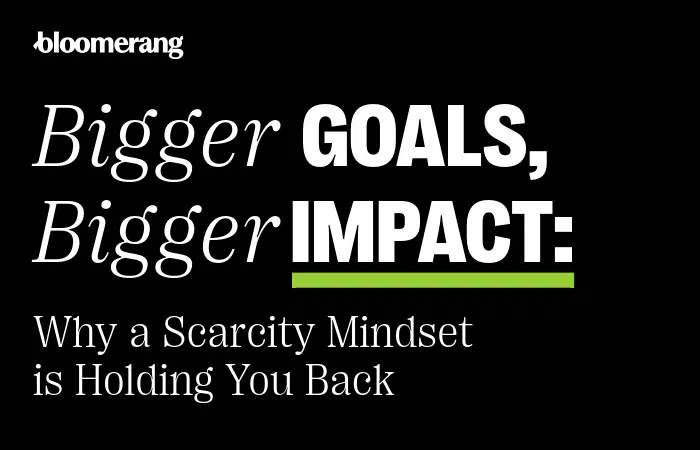Bigger goals, bigger impact: why a scarcity mindset is holding you back


When I ask nonprofit leaders about their fundraising goals for the year, I often hear some version of: “If we can just match last year, we’ll be okay.”
That mindset is not only limiting—it’s dangerous. Because if you set your sights at last year’s bar, you’re not building for the future. You’re standing still. And in a sector where donor demographics, economic forces, and community needs are constantly shifting, standing still isn’t an option.
I know this may sound bold, especially in a time when many organizations are working harder than ever through staffing shortages, or recovering lost federal funding. These challenges are real, and I don’t minimize them. But they don’t erase the fact that next-level impact and growth are possible—and that aiming higher is often the very thing that helps nonprofits break through those headwinds.
I believe every nonprofit deserves to set—and achieve—double-digit growth goals. Here’s why.
Despite headlines about giving declines, the truth is that generosity remains strong—and is growing. In 2024, charitable giving in the U.S. rose to $592.5 billion, a 6.3% increase over the prior year. Certain sectors saw even greater momentum: public-society benefit organizations grew 19.5%, international affairs 17.7%, and education 13.2%. These aren’t the signs of a shrinking pie—they’re proof that when people are engaged, generosity flows.
And engagement matters. During COVID-19, our data showed that organizations that sent crisis-focused appeals raised 30% more than those that kept their communications the same or stayed silent. The takeaway isn’t that urgency is the only path forward—it’s that donors respond when nonprofits meet the moment with relevance and authenticity. Generosity doesn’t vanish; it shows up when we invite it with clarity and conviction.
Scarcity is a mindset. Abundance is reality.
At Bloomerang, we set ambitious growth goals. This year, we aimed for 30% growth. Some thought it was unrealistic. But instead of intimidating us, the goal changed how we worked. We couldn’t just rely on what we did last year; we had to think differently. And today, we’re pacing ahead of that goal—because growth pushed us to be more creative, focused, and disciplined.
The same applies to nonprofits. If you set a 15% or 30% growth goal, you won’t get there by sending the same appeal to the same donors. You’ll start asking new questions:
Those questions spark innovation.
Retention matters, of course. But it’s not enough. If your fundraising strategy relies only on holding what you already have, you’re building on sand. Donors age, life circumstances change, priorities shift. Growth requires activating new supporters, engaging families across generations, and tapping into the vast generosity that exists outside your current circle.
Think about it: most nonprofits, even large ones, reach just a sliver of the U.S. population. That means the opportunity ahead is exponentially larger than what’s already in hand.
Double-digit goals aren’t just about dollars—they’re about energy. Staff, volunteers, board members, and donors all want to be part of something that’s growing, thriving, and making a bigger impact. Progress fuels passion.
And here’s the thing: setting a bigger goal doesn’t guarantee perfection. You may not hit 10%, 15%, or 20% every single year. But even if you grow by 7% instead of 0%, that progress energizes your team and builds resilience. The point isn’t to chase a magic number—it’s to orient your organization toward growth rather than survival.
Burnout doesn’t come from setting ambitious goals—it comes from spinning your wheels without seeing results. Based on what I’ve seen guiding Bloomerang and working with customers, aiming higher resets your strategy, releases energy, and unlocks value in places you may be under-leveraging. When you can point to real progress, even if you fall short of perfection or the goal, the journey itself is motivating.
If you lead a nonprofit, I challenge you: don’t settle for last year’s number. Don’t let industry averages—or flawed reports or negative news—dictate what’s possible. Set a double-digit growth goal.
Not because it’s easy, but because it’s necessary. Because your mission, your team, and your community deserve it. And because the generosity to achieve it is already out there—waiting for you to activate it.
Comments